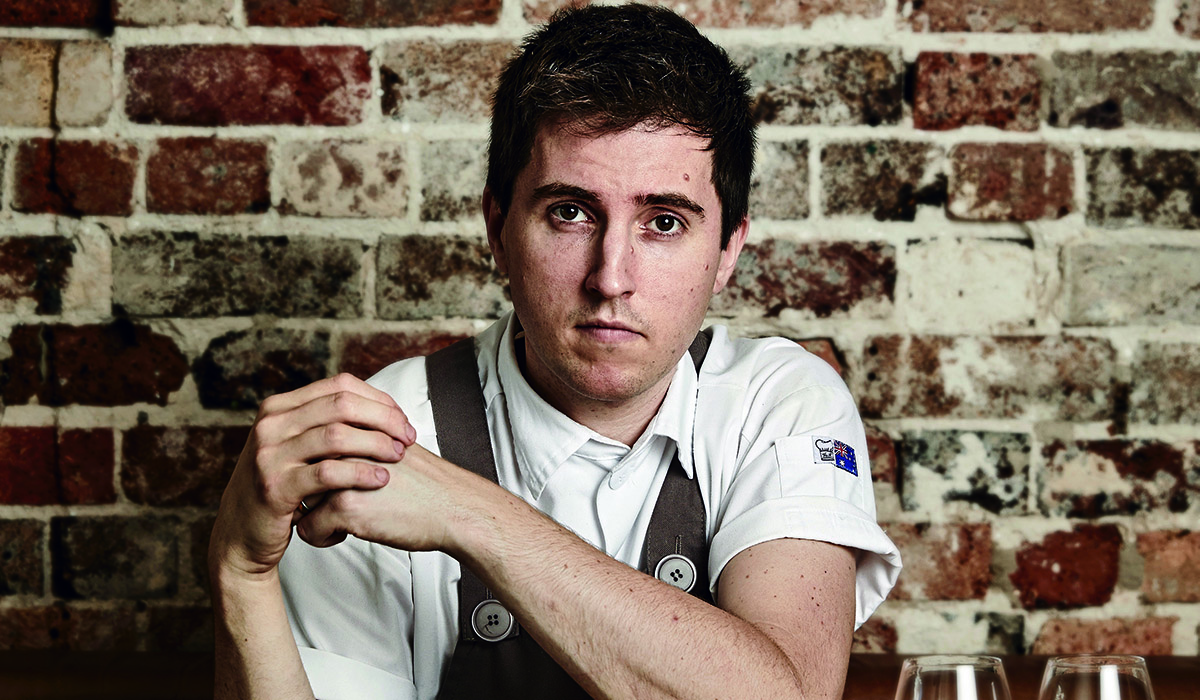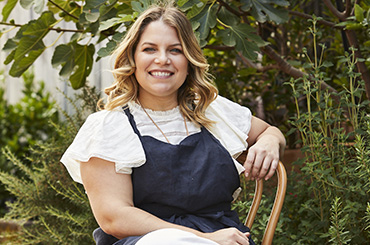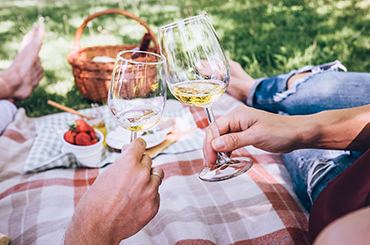Chef and author Josh Niland started the conversation around boundary-pushing seafood. He has won every award in Australia, as well as the prestigious James Beard Award, for his world-leading approach to using the whole fish and wasting nothing.
As a keen purveyor of encouraging us all to think laterally about fish, Josh Niland shares his ultimate holiday menu from his latest book Take One Fish. These are for the established cook wanting to attempt something different – and utterly delicious – this season.
Chef and author Josh Niland.
Menu – click to jump to the recipe
1. Smoked Herring & Buckwheat Blinis
Josh's wine to match: Champagne
Halliday recommends: James Halliday's Top Champagnes from the 2021 Top 100.
2. Salt & Vinegar Coral Trout
Josh's wine to match: chardonnay
Halliday recommends: For vibrant and bright styles to work with this dish, choose from the latest top-rating Adelaide Hills chardonnay.
3. Smoked snapper quiche
Josh's wine to match: White Burgundy
Halliday recommends: France's elegant chardonnays range in style, but for richer Australian expressions to stand up to this quiche, choose from the latest top-rating Margaret River chardonnay.
Chef Josh Niland is behind Sydney's Saint Peter and Fish Butchery, and author of Take One Fish.
---

Serves 2 as a light meal
"The smoked herring blinis are a wonderful starter for any occasion. As we head into the festive season, I think we can all agree that we start to wonder what we can feed the family, and what better way than a dish that can be customised with your own favourite condiments and perfect little blinis. If you can't get your hands on herring, substitute for your favourite fish as this recipe adapts well across a list of different species.”
Ingredients
4 French shallots, finely diced
½ cup cornichons, drained and finely diced
½ cup tiny salted capers, rinsed and drained
8 radishes, cut into thin wedges
1 cup picked watercress
Extra-virgin olive oil, for dressing
Sea salt flakes and freshly ground black pepper
Seeded mustard, to serve (optional)
Smoked herring brandade
80 g store-bought smoked herring fillet
210 ml full-cream milk
1 bay leaf
70 g skinless, boneless white-fleshed fish, such as ling or snapper
60 g butter, softened
Juice of ½ lemon
2 tbsp extra-virgin olive oil
60 g mashed potato
Fine salt
1½ tbsp sour cream or crème fraîche, plus extra to serve
2 bunches chives, very finely chopped
125 g buckwheat flour
125 g plain flour
1 tsp fine salt
1 cup full-cream milk
10 g dried yeast
3 eggs, separated
Ghee, for pan-frying
Method
To make the brandade, check the smoked herring meat and make sure it is boneless and skinless. Put the milk and bay leaf in a small saucepan and bring to the boil, then remove from the heat and add the smoked herring. Leave for 10 minutes, then strain the herring and discard the milk (or keep it to use in mashed potatoes or a root vegetable soup).
Steam the white fish in a bamboo steamer for 5 minutes or until the flesh is cooked and flakes apart easily.
Put the herring and fish in a small bowl, add half the butter and mash together with a fork. Drizzle over the lemon juice and 1 tablespoon olive oil, mixing with the fork as you go, then add the mashed potato and mix well. Add the remaining butter and olive oil and mix again, then season to taste with salt. Leave the mixture to cool, then fold in the sour cream or crème fraîche. Chill in the fridge for at least 1 hour.
For the blinis, sift both flours and the salt into a stand mixer fitted with the paddle attachment.
Pour the milk into a small saucepan and warm to blood temperature over a low heat. Remove from the heat, add the yeast and let it dissolve, then stand for 5 minutes until frothy.
Turn the mixer onto a low speed and combine the flours and the salt. Slowly pour in the milk and mix for 2 minutes to form a smooth batter. Cover the bowl with a tea towel and allow to prove in a warm place for 45 minutes or until doubled in size.
Add the egg yolks to the batter and mix with a whisk for 1 minute. Add the egg whites to the very clean bowl of your stand mixer fitted with the whisk attachment and whisk the whites to soft peaks. Add half to the batter and gently fold through to loosen it, then fold in the remaining egg white (this second batch aerates the batter to give the blini the desired lightness). Set aside to prove for another 15 minutes.
To cook the blinis, heat a wide-based cast-iron frying pan over a medium-low heat for a good 2 minutes before starting. It’s important the pan is hot. Add 1 tablespoon ghee and swirl it around to ensure the base is well greased, with a very light haze coming off the ghee.
Working in batches of six, add a tablespoon of batter for each blini to the pan, taking care to create neat circles. Cook for 30 seconds or until the edges are lightly golden and bubbles start to appear on the tops. Flip the blinis over and cook for another 30–60 seconds until they are firm but soft to the touch and the centres are set. Transfer to a wire rack to cool or place in a cloth napkin to keep warm. Repeat with the remaining batter. You should have enough to make 25–30 blinis.
To serve, assemble the shallot, cornichon, capers and radish separately alongside the herring brandade. Top the brandade with the finely chopped chives, dress the watercress with a little olive oil and season. Serve with the blinis and a little seeded mustard, if you like.
---
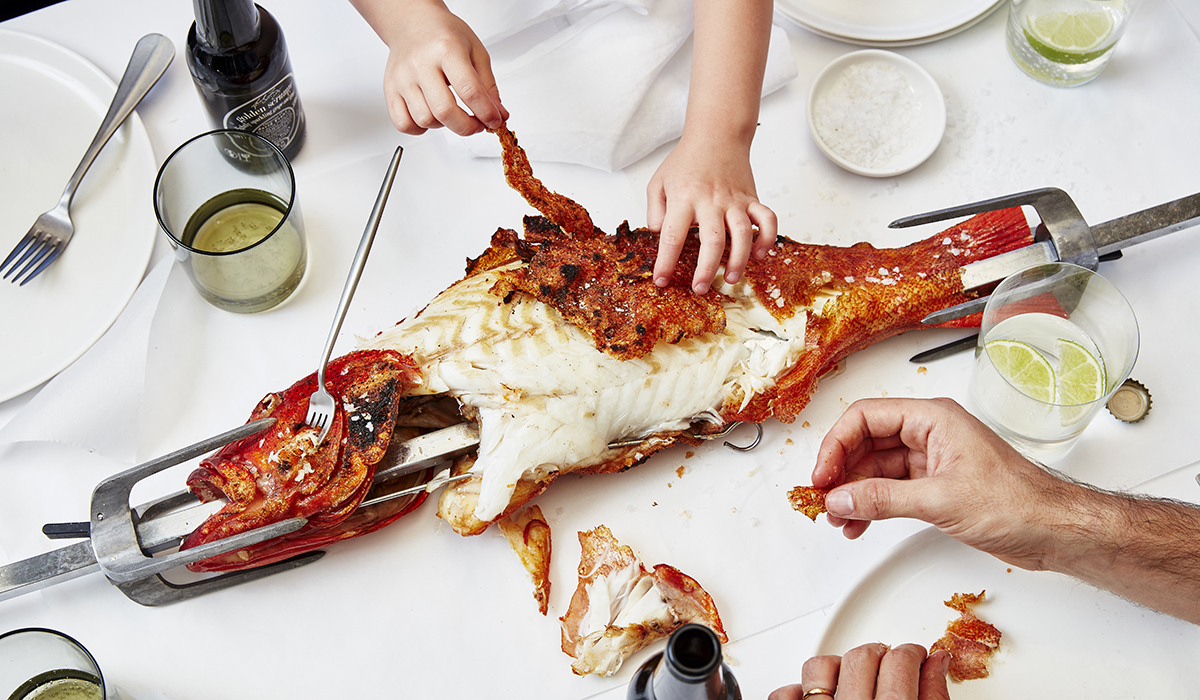
Serves 6
"Not only does it sound ridiculously delicious, but this recipe is also a phenomenal idea for what to land on the table this Christmas. Where we always pay homage to the traditional lamb roast or over-do it on the cooked prawns, try a rotisserie coral trout that will leave your guests speechless."
Ingredients
1 × 1 kg whole coral trout, gutted and pin-boned
¼ cup best-quality seaweed vinegar or white wine vinegar (not too sweet)
½ cup extra-virgin olive oil
sea salt flakes
Method
About 45 minutes before grilling, remove the coral trout from the fridge and let it come to room temperature.
In a spray bottle fitted with a misting nozzle, shake together the vinegar, olive oil and 1 teaspoon salt. Set aside.
For the charcoal grill, make sure the grill is hot and the charcoal has cooked down to hot embers. Divide the coals across the floor to create a cooler side and a more intense side of the grill.
Season the coral trout liberally with salt flakes, then place it in a grilling basket and set it over the hot side of grill (alternatively, separate the grill bars on a conventional wire rack so you have the flexibility of removing and turning the fish easily).
Cook until the skin begins to blister slightly, about 4 minutes, then carefully turn the fish over and cook for another 4 minutes, generously misting the first blistered side with about one-third of the vinaigrette as you go. Flip the trout back over and cook the first side again for another 3-4 minutes until the skin is well blistered and the flesh is opaque, misting the second side with half the remaining vinaigrette. The fish is ready when the skin is evenly coloured and the internal temperature registers 44°C on a probe thermometer.
Remove the coral trout from the grill and rest on a large serving platter for 8-10 minutes, then spoon over the remaining vinaigrette.
Carve the trout, discarding the spine and reserving the collar and head, and transfer the fillets to serving plates. Pour the resting juices from the serving platter into a small saucepan and bring to a simmer, whisking to form a glaze. Spoon the glaze over the fillets and serve right away.
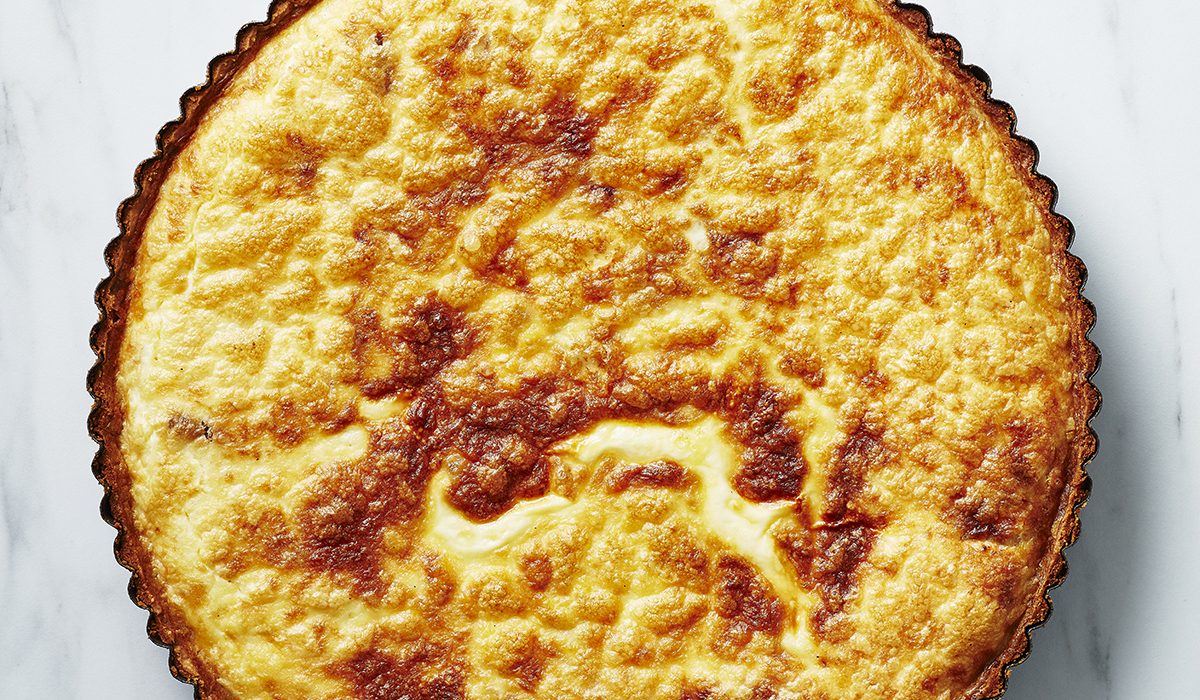
Serves 6-8
“To me, this recipe is a summary of what to cook on Boxing Day. After possibly having a whole fish or some leftover prawns or scallops from your Christmas celebrations, what better vehicle than a quiche? This dish is brilliant and one of my favourites from Take One Fish, but don't let its title suggest it's a one-trick pony. Once the pastry and custard are mastered, it’s yours to pop whatever leftovers you might have from a big Christmas Day. ”
Ingredients
600 g boneless snapper fillet, skin on
¼ cup sea salt flakes
1 × 14 g brick of apple wood chips
100 g Greek feta, crumbled
Pastry – or use store-bought
250 g plain flour, frozen
200 g unsalted butter, chilled and diced
½ tsp fine salt
55 ml chilled water
1 egg yolk, lightly beaten
Custard
1 cup full-cream milk
1 cup pouring cream
½ bunch lemon thyme, leaves picked and stems reserved
To cure the snapper, place the fillet in a sterile container or tray and cover it with the salt flakes evenly on all sides. Cure uncovered in the fridge for 12 hours.
Remove the snapper from the container (please do not wash the fish at this point.) There should be no residual salt on the surface – if there is, just scrape it off with a knife.
Add the wood chips to a smoker capable of hot-smoking and bring the temperature to 90°C. Place the cured snapper on a wire rack suited to the smoker and smoke for 30-35 minutes, depending on your desired degree of smokiness and doneness. Remove from the smoker and rest until it reaches room temperature, then store uncovered in the fridge, skin side up, until needed. Remove the skin and set aside in the fridge until you are ready to make the custard.
If making the pastry, pulse the flour and butter in a food processor to create very fine crumbs. Dissolve the salt in the water and add to the crumb, pulsing briefly to combine, then turn out the dough onto a chilled surface and work it with the palm of your hands for 3-4 minutes to form a very firm dough. Wrap in plastic wrap and chill for a minimum of 3-4 hours.
Preheat the oven to 190°C.
Roll out the chilled pastry on a lightly floured surface to a 4 mm thickness and use it to line a 28 cm tart tin. Line the pastry shell with a square of baking paper, fill it with uncooked rice or dried beans and blind-bake for 10 minutes, then remove the paper and weights and bake for a further 10 minutes. Brush the tart shell with the beaten egg yolk to seal the pastry. Set aside.
To make the custard, combine the milk, cream, lemon thyme stems and the skin from the smoked snapper in a large saucepan. Bring to a simmer over a medium heat, then remove from the heat and leave to cool for 10 minutes. Strain, discarding the solids, and pour into a blender, along with the eggs, salt, pepper and nutmeg. Blend on low speed for about 10 seconds to combine, then increase the speed to high and blend until the custard is aerated and foamy.
Break the smoked snapper fillet into large flakes and arrange over the base of the tart shell, along with the crumbled feta and lemon thyme leaves. Pour over enough of the custard to cover the ingredients and half-fill the pastry shell.
Transfer the quiche to the oven and pour in the remaining custard to fill the shell all the way to the top. Bake for 25 minutes, until the top of the quiche is browned and the custard is softly set when the tray is wobbled. Remove from the oven and leave to cool to room temperature before serving.
For best results, place in the fridge overnight and serve chilled or gently warmed in the oven the next day. By this time, the quiche will have a slightly firmer composition and the smokiness of the snapper will become rounder and more subtle.
Chef Josh Niland is behind Sydney's Saint Peter and Fish Butchery, and his new book is Take One Fish.
